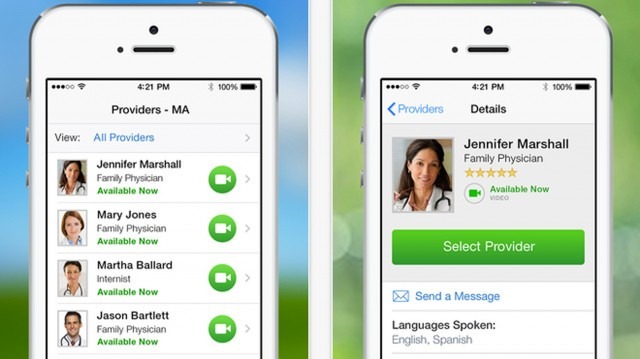How iPhone health gadgets could change what ‘see your doctor’ means

Apple’s Health app had a quiet rollout in late 2014, and months later many iOS users still aren’t sure how the platform works on their new (or newly updated) iPhone.
Sure, we’ve already seen a series of apps like Nike+ Running, MyFitnessPal and the MayoClinic work with the iOS-based hub for tracking personal health data, but as of now, Health’s forecasted impact on the medical industry has yet to be proven.
But there’s another emerging trend that’s shaping up to have a profound impact on the future of doctor visits and getting faster treatment: iPhone gadgets.

Image: CellScope
From a device that helps identify when a child has an ear infection to FaceTime sessions with a physician for only $49 a pop, startups are looking for ways to make the most of Apple’s Health platform and are doing some pretty revolutionary things along the way.
CellScope’s Oto Home device ($79) is an accessory that looks like a traditional otoscope that doctors use to look inside a patient’s ear. It attaches to the iPhone’s camera and captures video of what’s happening in the ear canal. The clip can then be sent to a doctor via email (for an additional $49 fee), so they can diagnose and provide a prescription nearly on demand. The gadget can share data with the Health app (so doctors can see a running history). The idea is to help connect families in remote areas (think: rural Alaska) with pediatricians quickly.
“We want to bring the doctor into your home,” said co-founder and CEO Erik Douglas. “In the same way that banking has moved from the branch office to the mobile phone, CellScope aims to deliver healthcare wherever you are.”

Ear infections bring more kids to the pediatrician’s office each year than anything else — an ailment that costs the U.S. healthcare system about $3.5 billion annually — and most children (80%) have one by the age of three, so the opportunity for the startup is clear. While the device is only available in California right now, you can sign up to be notified once the CellScope is approved for use in other states. The company anticipates a greater rollout in the second quarter of 2015.
Another gadget called the Swaive is an intelligent in-ear thermometer (also $79) and syncs up to Apple’s Health app via Bluetooth to keep track of body temperature over time.

Image: Swaive
The device not only monitors the health of someone who is sick but can also serve as a tool for measuring temperature when trying to get pregnant (fluctuation often indicates when a woman is ovulating). Readings from a user’s profile are automatically sent to Apple Health when they are recorded and can then be sent to doctors.
“It’s designed to help parents or users in general send their temperature measurements directly to doctors,” Gurpal Bhoot of Swaive told Mashable. “In the app, there is a feature to record occurring physical symptoms and medicines the patient is currently taking, which allows for a complete recent medical history for the doctor to use to diagnose in a relatively quick manner.”
For those who don’t want to visit doctors in person — or don’t have health insurance — there’s a way the iPhone can help. An app called AmWell lets you FaceTime with doctors 24/7, no appointment needed. Physicians who are a part of the AmWell network provide real-time feedback, diagnosis and treatment for $49 a virtual visit, with printable receipts available for insurance reimbursement. Patients load up the app and can peruse through a collection of doctors (including information related to their education, years of practice and ratings).

Image: AmWell
So while there hasn’t been much fanfare around the Apple Health app since its debut — or too many obvious examples of how the iPhone itself can influence the medical field — these integrations are starting to point the way, and may be the firsts steps toward tapping the potential of the company’s HealthKit platform. For millions of iPhone users, the benefit is clear: getting medical attention faster than ever.
Have something to add to this story? Share it in the comments.
